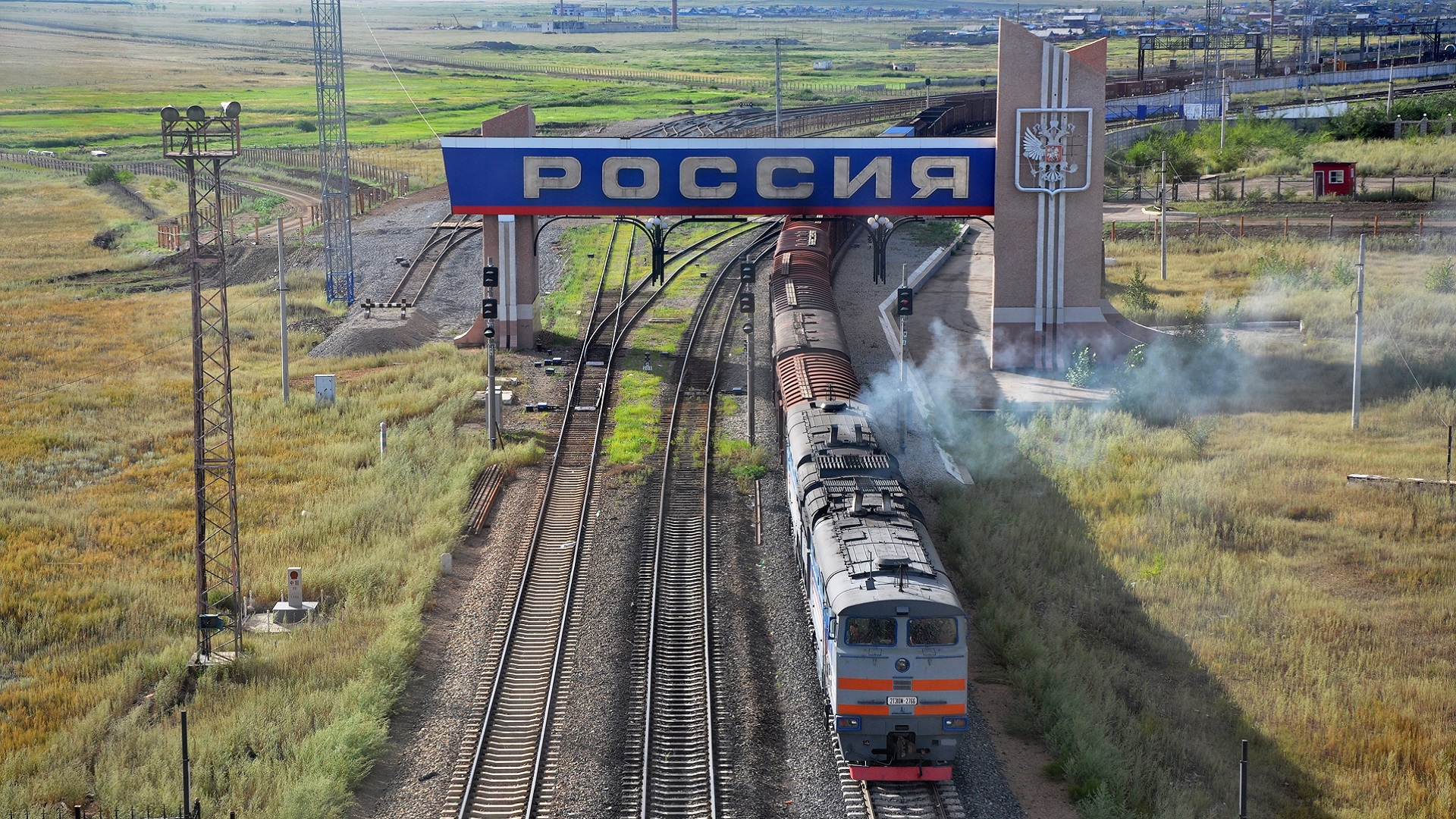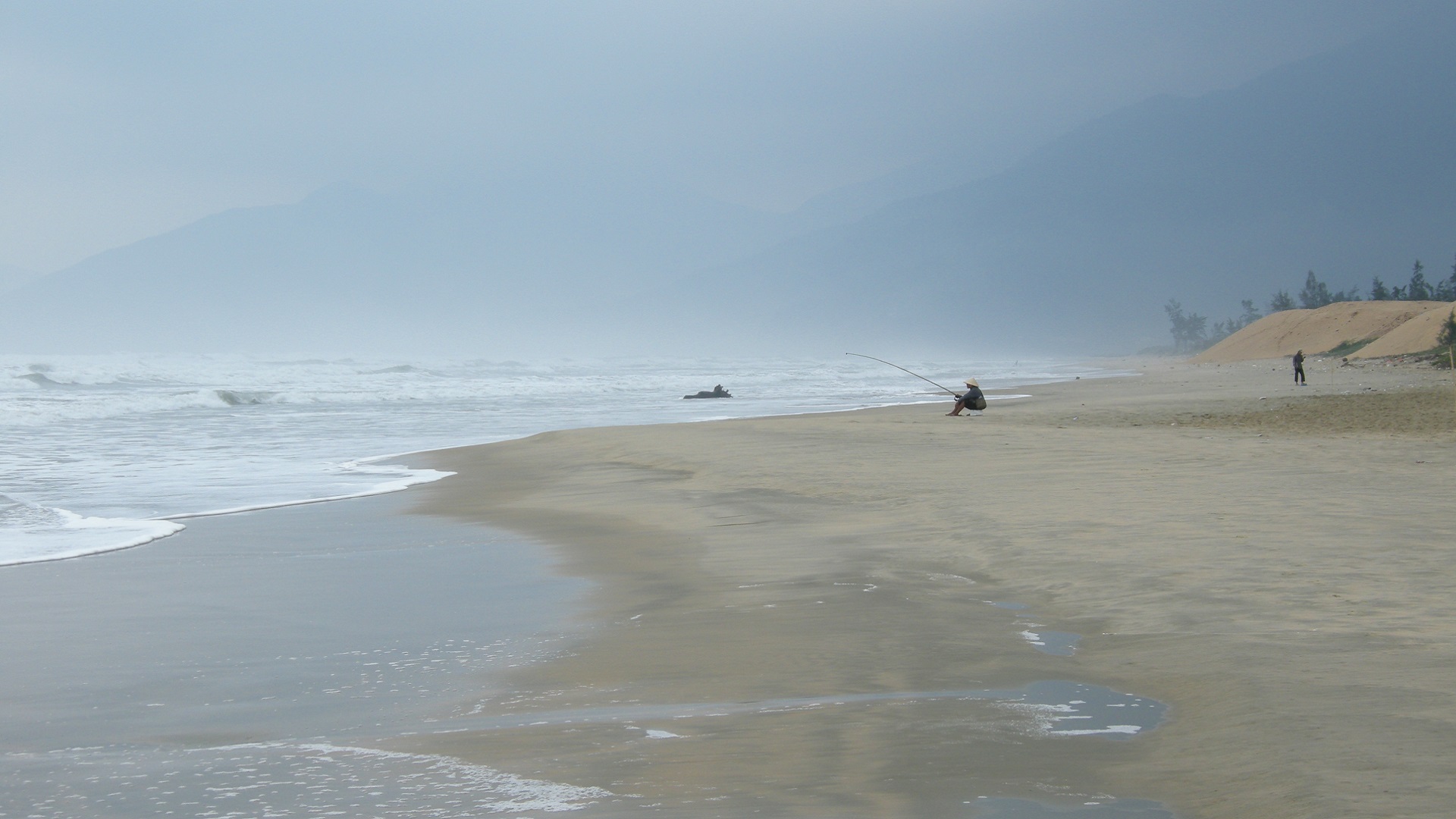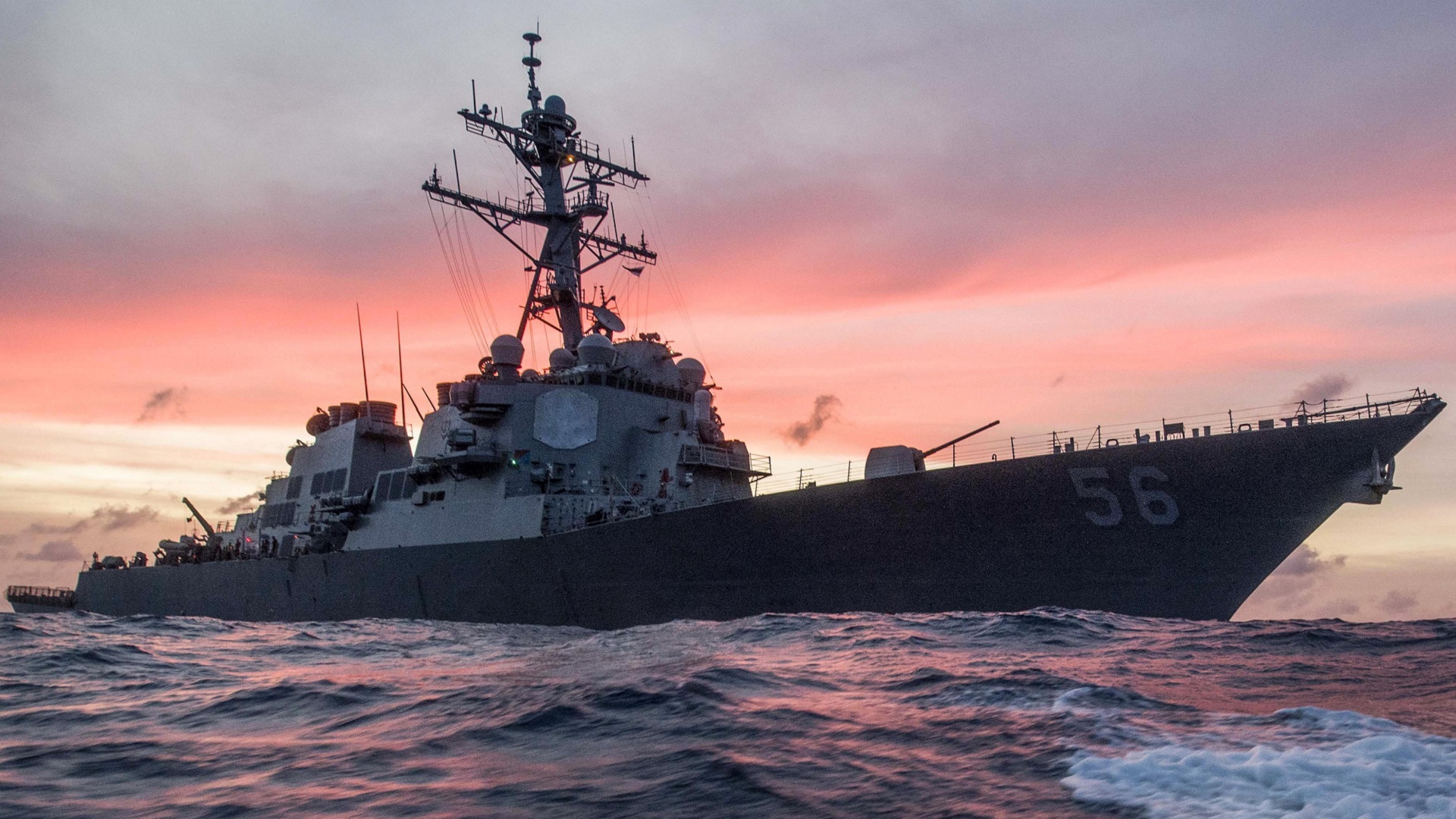The People’s Republic of China’s (PRC) military and territorial ambitions in the East and South China Seas have stirred up cold war anxieties between the world’s major superpowers. On top of growing nationalism and a wave of Western trade sanctions, these uncertainties have shaken the foundations of globalization and the aspirations of free and open trade. Consequently, global supply chains are being de-risked and transformed in the name of economic and national security. A major concern is protecting the extraordinary amount of shipping passing through the South China Sea alone, estimated to be $5.3USD trillion annually. This equals more than 60% of global maritime trade and 22% of total global trade. Any sort of disruption, including a military miscalculation or blockade (think Malacca Straits) would have disastrous effects on the world economy.
Beijing’s contemporary dispute with Taiwan (Republic of China) dates back to the Chinese Civil War of 1945-49 when Chiang Kai-shek’s Nationalist forces were routed by Chairman Mao Zedong and his Chinese Communist Party forces, compelling them to flee from mainland China to Taiwan ninety miles away. Yet, the PRC’s claim to Taiwan as a renegade province actually dates back to Qing Dynasty of 1683-1895.

Until recently, Chinese President Xi Jinping’s incremental moves to bring Taiwan back into the mainland’s fold remained below the threshold of outright conflict. Today, however, China’s military regularly conducts menacing military drills and mock invasions of Taiwan from the air, land, and sea. These dress rehearsals have rattled Taipei while placing the U.S. Navy’s Seventh Fleet on high alert for further intrusions into the island’s airspace and territorial waters.
A Dispute Beyond Taiwan
In addition to Taiwan, China’s overlapping land and sea disputes extend to sixteen other Asian countries in the region, including many of the fourteen nations that share a land border with the Middle Kingdom. They include India, Mongolia, Myanmar, Nepal, North Korea, Pakistan, Philippines, Russia, Vietnam, and four states in Central Asia. Indeed, the PRC’s total land border extends 13,743 miles, the world’s longest. The Chinese-Russian border alone runs 2,616 miles. Surprising to most, Beijing and Moscow have been locked in a debate for decades over their respective territorial boundaries. This despite President Xi’s recent “journey of friendship tour” to meet with President Vladimir Putin to discuss, of all things, Russia’s land grab of eastern Ukraine. Modern day Sino-Soviet and Sino-Russian territorial disputes center on disagreements over eastern Siberia and its wealth of natural resources. Historically, this remote and densely populated land border has expanded and contracted, resulting in numerous interpretations of sovereignty. At issue of who owns what is partially attributed to lax border controls in these hinterlands that are crossed daily by Chinese and Russian traders who sometimes stay for indefinite periods of time.

China’s self-proclaimed “wolf warrior” policy and its creeping annexation of other countries in the Asia-Pacific and Indo-Pacific regions have flared tensions with Japan, too. Situated between the two nations in the East China Sea are the Ryukyu and the Senkaku Islands (referred to as the Diaoyu Islands by China) whose ownership are in question. Although uninhabited, these islands contain rich oil and gas reserves and large fish stocks that the Chinese navy is attempting to impose its will upon. In the nearby Yellow Sea, South Korea is being challenged by Beijing over the Socotra Rock, known as Suyan Rock to China. Both countries claim that the submerged rock is part of their respective exclusive economic zones.
In the South China Sea, Beijing has redrawn the map by inserting the nine-dash line to proclaim the islands and reefs that surrounding countries also claim as their territory — despite Chinese infringement on the continental shelf of neighboring countries. This cartographic manipulation includes the Paracel Islands, contested by Vietnam. Similarly, Chinese military installations on the Spratly Islands (an archipelago that includes Mischief Reef) have upset the regional balance of power with not only Vietnam but with Brunei, Malaysia, the Philippines, and Taiwan, too.

The Scarborough Shoal was seized from the Philippines in 2012 and, despite an International Court of Justice ruling in favor of Manila’s sovereignty of the shoal, Beijing has refused to relinquish the territory. To the southwest of China’s mainland, the Peoples Liberation Army (PLA) and India are settling a longstanding score over infrastructure developments in the Himalayan peaks of Arunachal Pradesh. China widened its troop presence and built new roads on land claimed by New Delhi. In 2020, the situation escalated into open conflict in the Line of Actual Control resulting in twenty-four deaths of Indian and Chinese soldiers. The historical enmity over the ill-defined border between the world’s two most populous nations was last fought over in 1962.
Fraying Peace with the West
On one hand, the United States and its allies want freedom of navigation of commercial shipping and safe passage of NATO and regional navies in Southeast Asia. They have also called upon China to respect international law and the rights of other countries in these vital sea lanes. Numerous countries continue to patrol and conduct joint military exercises in the region to underscore their commitment to ensuring open passage in the East and South China Seas. Other areas of concern raised by the West include intellectual property violations and serious cyberattacks launched by the PLA on critical infrastructure and public and private institutions. On the other hand, China is examining its century-long humiliation at the hands of Western colonists, Japanese aggression during WWII, bringing Taiwan back into its orbit, and perceived intrusions by foreign navies in what it considers its backyard. Taken together, these grievances have increased the likelihood of a military conflict, especially considering how crowded the maritime sea lanes have become in these waterways.

The inherent mistrust between geopolitical rivalries has dramatically changed the contours of international trade, foreign investment flows, and remapped global supply chains to friendlier shores. How did we arrive to the point where the ostensible peace dividend gained from aligning economic interests through globalization came to an abrupt halt? It is a classic case of what historians refer to as the Thucydides’ Trap, whereby the tectonic plates of an upcoming great power seek to rise up and displace the reigning incumbent. Geopolitical experts argue that China is attempting to supplant the post-WWII economic and military order led by the U.S. with Beijing’s authoritarian brand of global leadership.
As the West slept walked, China became a chess grandmaster in gaming their mercantilist system once it ascended into the World Trade Organization (WTO) in 2001. In retrospect, many globalists view their admittance as a strategic blunder by Western policymakers lacking cursory knowledge of Chinese history and philosophy outlined in Sun Tzu’s Art of War. Conversely, it was a masterstroke in economic statecraft and manipulation by Beijing. Rather than nudging the Middle Kingdom to become a ‘normal nation,’ the WTO unwittingly gave them license to plunder intellectual property from Western nations knowing the capitalists would not be able to resist huge profits in a market of more than 1.27 billion people at the time. In exchange, China dismissed the rules and conventions governing international trade and foreign direct investment. In exchange for market access, Beijing insisted on massive transfers of first-generation technologies from Western firms. This obviated the need to spend massive amounts of yuan required to organically research and develop homegrown scientific discoveries.
The Belt and Road Initiative
Meanwhile, Beijing began developing its Belt and Road Initiative (BRI) in 2013, a modern-day Silk Road designed to create physical infrastructure to link China-lead trade and investment routes that today provide it with market access to 147 countries in Asia, Europe, Africa, Latin America, and Oceania. According to the Council on Foreign Relations, this accounts for two-thirds of the world’s population and 40 percent of global GDP. The BRI brought countries into China’s grasp with the promise of major infrastructural spending on airports, rail, roads, seaports, and mining and energy concessions worldwide. This web of economic interdependence has forced China’s neighboring countries into a non-aligned and transactional approach to geopolitics for fear of offending Beijing or Washington. The latter’s penchant for unreliability and ambiguity in protecting the integrity of its foreign policy pronouncements (i.e., abandoning Afghanistan and the Kurds) has shattered the nerves of Asian nations who would otherwise stand up against China’s aggression.
Yet for many nations the BRI has become a poison chalice characterized by debt-trap diplomacy and economic and political dependence on China. It has also compromised the sovereignty of debtor countries unable to repay their loans. For example, Sri Lanka, who defaulted on its largesse from China and forced to declare bankruptcy, grudgingly collateralized a ninety-nine-year lease of its Chinese-built, deep seaport in Hambantota. If this appears eerily similar to how the British Empire imposed their will on China in 1898 to secure its ninety-nine-year lease on Hong Kong, it is because it is from the same imperialist playbook. China will use Hambantota to dock its navy while patrolling the Indian Ocean, unnerving Sri Lanka and hardly winning the affection of neighboring countries like India.
Where Do We Go From Here?
History demonstrates how economic power begets military power. In China’s case, its rapid development has generated greater assertiveness that has clashed with the post-WWII order. By hiding their strengths and biding their time, Beijing has effectively managed to tread softly, incrementally, and almost unperceptively to become the world’s second largest economy and military. President Xi sees this as a mandate of heaven and a moment to restore the Middle Kingdom’s former greatness when it was the envy of the world. It has also compelled China to redress perceived wrongs at the hands of Western powers and neighboring countries in Asia. Similar to how Washington and Moscow managed the Cold War, détente like confidence-building measures are necessary to ease suspicions and miscalculations in an unsettled, multi-polar world. This will require tapping the brakes on threatening rhetoric and refraining from viewing one side’s deterrence as the other side’s escalation. Only then will a collision course be circumvented, and strategic stability will be realized. The alternative is unthinkable.
Sign up today for a free Essential Membership to Automation Alley to keep your finger on the pulse of digital transformation in Michigan and beyond.
Noel Nevshehir is director of Automation Alley’s International Business Services and Global Strategic Partnerships. In this role, Nevshehir is responsible for leading Automation Alley’s trade mission program and foreign direct investment efforts. He is also responsible for seeking out global strategic partners that align with Automation Alley’s Industry 4.0 mission.




